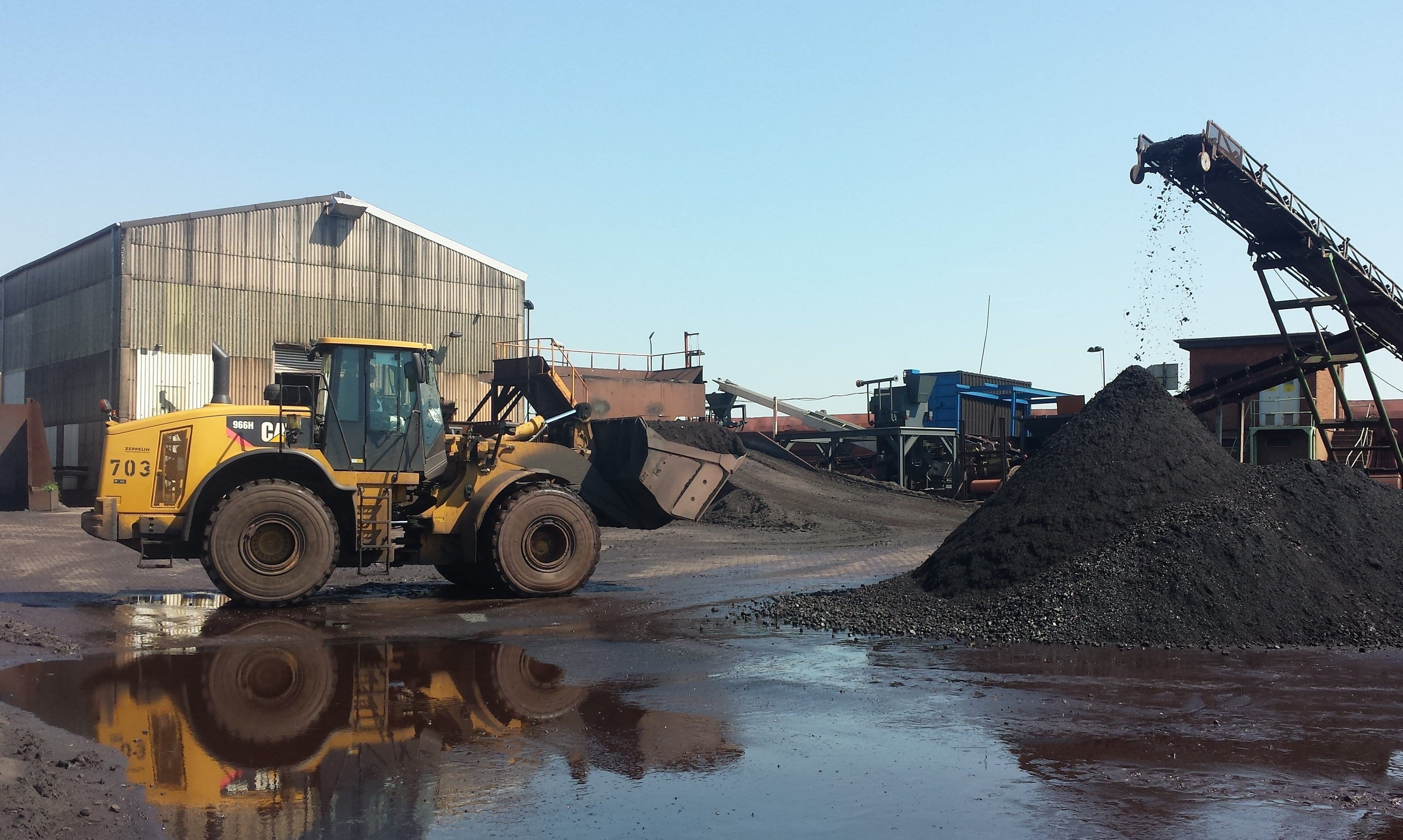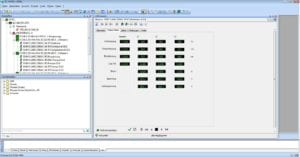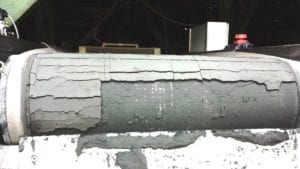
Conveyor belts bring bulk goods, which have been contaminated during transport, to various process stations. Here, they are decontaminated by mixing them with other substances. Electronic motor management modules that can be parameterized and diagnosed via FDT ensure the belts operate smoothly.
Before coal can be burned in power stations, it must be free of iron ore residue and other substances. A German company, Techno-Agrar Rohstoffhandel GmbH from Rheinberg-Orsoy, has developed a solution for this. First of all, the mixture is suspended in water to

Figure 1: Large quantities of coal and iron ore are transported and filtered using the vacuum belt filter.
separate coarse-size coal from ore. Finer pieces of sediment measuring less than 0.5 mm are separated using hydrocyclones and spiral separators. The effect of the rotation and the resulting centrifugal forces make it easy to separate the heavier elements (Figure 1).
As coal moves from one station to another, the conveyor belts transporting the materials must be monitored continuously. This is the only way to detect faults or overloads in a timely manner. Smooth production operations also require the visualization of all relevant process parameters as well as comprehensive diagnostic options in the control room. Furthermore, it must also be possible to manually adjust the system parameters from there. The operator should also be able to react quickly to process changes. If the conveyor belts come to a halt, restarting while under a load is not possible. The materials that are being moved clump together and harden, which makes restarting the motors and gears difficult.
Central data access
Such errors can be prevented through the use of intelligent EMM (Electronic Motor Management) modules, which can be parameterized and diagnosed using FDT. When operators in control rooms can access the device parameters and diagnostic data of each motor control application, error states can be detected and remedied promptly. In Techno-Agrar’s separation system, a higher-level controller uses PROFINET to communicate with distributed small-scale controllers and their remote I/O stations, which are connected via INTERBUS and PROFINET. The terminals mounted in the system enable on-site operation, while safety modules are responsible for the emergency stop as well as other safety functions. Lastly, the EMM modules control the load on the pumps, conveyor belts, and other motors.![]()

Figure 2: The EMM-DTM provides comprehensive information on the current motor states.
Techno-Agrar uses a DTM to monitor the motor managers effectively by acquiring apparent, active, and reactive power. To this end, the curves are illustrated for current consumption, voltages, phase angles, switching cycles, operating hours, energy consumption, and phase failure, as well as other values. Using such data, employees can determine whether a fan belt is rotating and whether bearings are damaged or pumps have run dry. If threshold values are exceeded, the EMM outputs can be set or a targeted switch-off can be executed. Limit values and switching thresholds can be directly parameterized in the corresponding DTM so no changes are required in user programs (Figure 2).
Always the same user interface
If an employee needs to adjust the EMM during startup, the corresponding DTM can be embedded in the PC Worx engineering system used for controller programming and network configuration. If Techno-Agrar wishes to monitor and parameterize the warning and shutdown thresholds during operation, the DTM can be integrated into other FDT framework applications by leveraging the standardization of the FDT interface. This means that the user interfaces remain the same, regardless of the tool environment where the DTM is used.
Andreas Reilard, Operations Manager at Techno-Agrar, reports, “Thanks to the use of the FDT Technology, combined with the EMM modules, we can monitor the pumps and conveyor belts and, if necessary, adjust the parameters accordingly. Potential failures are therefore detected and prevented in a timely manner, so that the effort required, both in terms of time and expense, is significantly reduced.